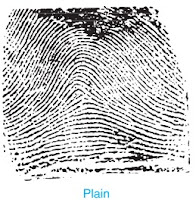Water Pollution and it's Types, Causes, Effects and Prevention
Water is a basic need for humans, it is used in household works, industry, and agriculture. We need fresh and clean water for our daily activities like drinking, washing, etc. But unfortunately, natural water from rain, rivers, and ground get contaminated causing health hazards.
Water pollution has many types; it may be seawater pollution, groundwater pollution, etc. So, here is complete information about water pollution; it's types, causes, effects, sources and preventive measures.
More than 90% of freshwater is groundwater and the rest is present in rivers, streams, lakes, etc. Rainwater gets collected in the ground through small pores present in the Earth's surface.
These pores act as a natural filter and filter out any possible impurities in water. Thus, we get pure water from wells and hand pumps which is satisfactory for domestic use. But due to anthropogenic activities like the discharge of industrial and domestic waste and the use of fertilizer in plants, these impurities get mixed with water and get collected in groundwater.
This makes groundwater unfit for use. That's why in many areas wells and hand pumps are not recommended for use.
Many pollutant gases present in the atmosphere like CO2, CO, SO2, etc get dissolved in the water, making it polluted.
Many other impurities like domestic/industrial/agricultural waste, decomposed bodies of animals and plants, human waste, etc make water unfit for use.
The Indian government is running many campaigns like Ganga action plan, Yamuna action plan, etc to save holy rivers of the country.
Pollution in these rivers is mainly due to the discharge of human and animal waste, discharge of industrial and agricultural waste, and other polluting waste like paper, plastic, and textile.
Seawater is unfit for human use due to its salty nature but it's essential for aquatic life. Pollution of seawater directly affects aquatic animals like fish, seals, dolphins, etc.
Spreading of oil into the sea is called oil spill and that oily surface of the water is known as an oil slick.
Here are the possible sources of oil pollution in seawater:
Consuming polluted water over a while may lead to the accumulation of these toxic elements in the body and they are not excreted.
Acidic water which generally comes from mines and acid rain contains sulphuric acid which is lethal for living organisms.
It is a very serious problem in the hilly area. The presence of soil particles in the water leads to turbidity which hinders the moment of the aquatic organisms and hence leads to a decrease in their population.
Factories and thermal power plants to cool down their machinery dispose of a large amount of heat into the rivers which directly affects aquatic life.
The bacteria which decompose the plants use the oxygen present in the water which decreases the amount of oxygen needed for the survival of aquatic animals.
Water pollution has many types; it may be seawater pollution, groundwater pollution, etc. So, here is complete information about water pollution; it's types, causes, effects, sources and preventive measures.
Water gets polluted in the following ways:
1. Natural Factors
Yes, water can get polluted by natural factors like washing away of the decomposed vegetables, animal waste, and mixing of soil.2. Human Factors
Water can get polluted by many anthropogenic activities like the discharge of industrial waste, domestic waste, use of fertilizer in crops, etc. These factors are way much harmful than natural factors.Definition of Water Pollution
The addition of external impurities in water which makes it unfit for domestic and industrial use and unhealthy for humans and animals is called water pollution.Signs of Polluted Water
- It has a very bad taste.
- It has a very unpleasant odor.
- It has a very bad color.
- It has physical impurities floating on the surface like oil and grease.
What are the different types of water pollution?
Based on the observations there are mainly five types of water pollution:1. Groundwater Pollution
Water present below the surface of the earth is known as groundwater.More than 90% of freshwater is groundwater and the rest is present in rivers, streams, lakes, etc. Rainwater gets collected in the ground through small pores present in the Earth's surface.
These pores act as a natural filter and filter out any possible impurities in water. Thus, we get pure water from wells and hand pumps which is satisfactory for domestic use. But due to anthropogenic activities like the discharge of industrial and domestic waste and the use of fertilizer in plants, these impurities get mixed with water and get collected in groundwater.
This makes groundwater unfit for use. That's why in many areas wells and hand pumps are not recommended for use.
2. Surface Water Pollution
As the name suggests, water present on the surface of the earth in any form is called surface water.Many pollutant gases present in the atmosphere like CO2, CO, SO2, etc get dissolved in the water, making it polluted.
Many other impurities like domestic/industrial/agricultural waste, decomposed bodies of animals and plants, human waste, etc make water unfit for use.
3. Lake Water Pollution
Lakes are the rich source of water but due to following reasons, lake water gets polluted:- Discharge of organic waste of homes and factories.
- Discharge of organic matter of sewage treatment plants.
- Dumping of garbage of villages and cities.
- Inorganic pollutants of fertilizers and pesticides used in agriculture.
4. River Water Pollution
There was a time when river water is considered the purest form of water on earth. Especially, In India, river Ganga is considered as a holy river and its water is considered so pure that Indians use it in treating ill people. But now it's water is so polluted that forget treating ill people, it may ill a healthy person.The Indian government is running many campaigns like Ganga action plan, Yamuna action plan, etc to save holy rivers of the country.
Pollution in these rivers is mainly due to the discharge of human and animal waste, discharge of industrial and agricultural waste, and other polluting waste like paper, plastic, and textile.
5. Seawater Pollution
More than 70% of Earth's surface is nothing but seawater. There are hundreds of resources like oil, gas, food, minerals, coal, etc we get from the sea.Seawater is unfit for human use due to its salty nature but it's essential for aquatic life. Pollution of seawater directly affects aquatic animals like fish, seals, dolphins, etc.
Definition of Seawater Pollution
The addition of contaminants like oil and garbage in marine water which affects the health aquatic life is known as seawater or marine pollution.Sources of Oil Pollution in Seawater
Oil is the main pollutant in seawater.Spreading of oil into the sea is called oil spill and that oily surface of the water is known as an oil slick.
Here are the possible sources of oil pollution in seawater:
- Discharge of excessive oil during the accident of oil carrying ship.
- Oil leakage from malfunctioned pipelines.
- Discharge of oily waste from oil refineries present in the ocean.
- Discharge of oily waste during tank washing.
Other Sources of Pollution in Water
Apart from oil spilling, the following may be the possible sources of seawater pollution:- Discharge urban and rural waste.
- Discharge of fertilizers and pesticides through agricultural land.
- Discharge of radioactive waste.
- Dumping of garbage into the sea.
Effects of Oil Pollution in Seawater
- Oil spilling causes damage to the health of aquatic animals. Oil makes them unable to respire by blocking their gills.
- The oil acts as a poison for some fishes due to the presence of aromatic compounds in it.
- Oil coating cuts the supply of oxygen into the sea. Thus, reducing dissolved oxygen.
What are the main causes of water pollution?
Following are the main causes of water pollution:1. Sewage and Domestic Waste
Human waste, Animal waste, Detergents, soaps, and municipal waste are some examples of Domestic waste. They produce harmful bacteria that causes many diseases like cholera, typhoid, etc.2. Industrial Effluents
Effluents discharged by factories like aldehydes, ketones, phenols, oil, grease, etc are hazardous. Moreover, metals like cadmium and mercury are so toxic that it can damage kidneys.Consuming polluted water over a while may lead to the accumulation of these toxic elements in the body and they are not excreted.
Acidic water which generally comes from mines and acid rain contains sulphuric acid which is lethal for living organisms.
3. Agricultural Discharges
These are fertilizers, pesticides, insecticides, and other chemicals.4. Siltation
The process of mixing of soil or rock particles into the water is called siltation.It is a very serious problem in the hilly area. The presence of soil particles in the water leads to turbidity which hinders the moment of the aquatic organisms and hence leads to a decrease in their population.
5. Thermal Pollutants
Pollutants that can increase the temperature of the water is known as thermal pollutants.Factories and thermal power plants to cool down their machinery dispose of a large amount of heat into the rivers which directly affects aquatic life.
6. Radioactive Waste
Radioactive waste discharged by nuclear power plants emits hazardous radiations which are not only harmful to aquatic animals but also fatal for humans.Classification of Water Pollutants
The various pollutants can be classified into the following categories:1. Inorganic Pollutants:
- Acids like sulphuric acid, hydrochloric acid, and nitric acid and bases like sodium hydroxide, Ammonia, and potassium hydroxide are the two main inorganic pollutants.
- Salts like carbonates, bicarbonates, fluorides, chlorides, iodides, etc are inorganic pollutants that are soluble in water.
- Salts like calcium carbonate, calcium phosphate, etc are inorganic pollutants that are insoluble in water.
- Heavy metals like cadmium, mercury, zinc, copper, etc are hazardous for humans.
2. Organic Pollutants
- Proteins and carbohydrates like glucose, sucrose, starch, etc are organic pollutants that are emitted by food factories, dairies, slaughterhouses, etc.
- Different types of oil like olive oil, palm oil, mustard oil can pollute sea during their transportation from one place to another.
- Organic chemical waste like aldehydes, ketones, and phenols are discharged by laboratories.
- Polynuclear aromatic compounds discharged from refineries have carcinogenic (cancer-causing) properties.
3. Sediments
As already discussed, particles of soil, rocks, minerals are called sediments. They come from agricultural lands, mountains, construction sites, etc causing turbidity in water.4.Infection Causing Agents
Water which generally comes from hospitals, slums, water treatment plants, hotels, etc contains feces and urine which on mixing with water produce bad bacteria. These bacteria lead to countless diseases like typhoid, cholera, diarrhea, and the list goes on.5. Plant Nutrients
The plant nutrients such as Nitrogen and Phosphorous supports the growth of unwanted plants in the lakes which later get decomposed creating a foul smell.The bacteria which decompose the plants use the oxygen present in the water which decreases the amount of oxygen needed for the survival of aquatic animals.
What are the preventions of water pollution?
Following are the basic prevention methods of water pollution:- Always dispose of garbage into the dustbin, not in the water bodies.
- Dispose of domestic and human waste into the sewage instead of rivers and ponds.
- Always use Phosphate-free detergents and bleach which are organic pollutants.
- Always use washing machine, dishwasher, etc on full load. It will not only save water but also reduce the discharge of dirty water.
- Avoid using fertilizers and pesticides in the agricultural land instead focus more on manure which is not only beneficial for the fertility of the soil but also reduces water pollution.
- Never throw the used kitchen oil into the sink. It may lead to clogging and pollute water.








